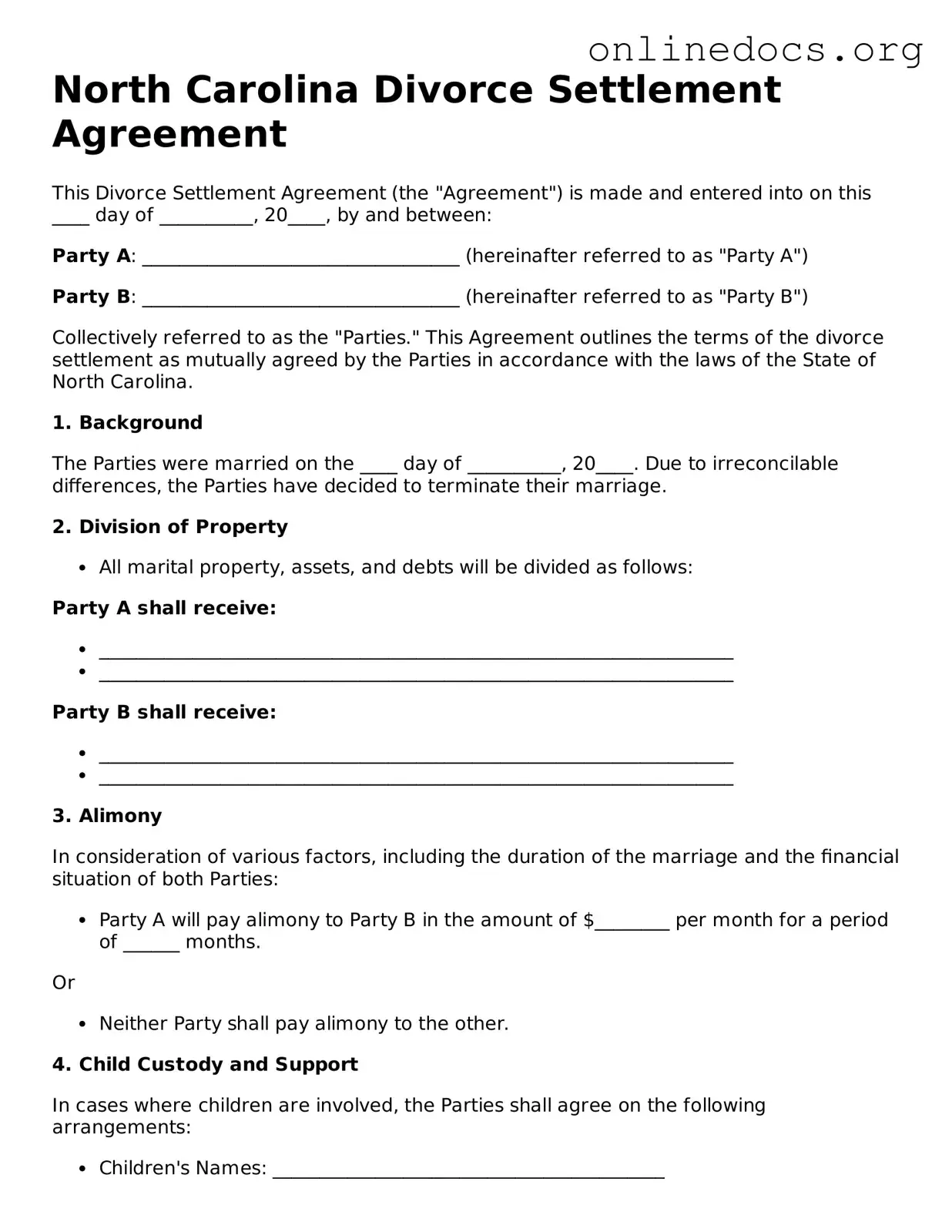The North Carolina Divorce Settlement Agreement form shares similarities with a Separation Agreement. Both documents outline the terms of how a couple will handle their affairs after deciding to part ways. They address issues such as property division, child custody, and support obligations. While a Separation Agreement may be used before a divorce is finalized, a Divorce Settlement Agreement is specifically designed to finalize the terms of the divorce itself. In essence, both serve to clarify the expectations and responsibilities of each party, promoting a smoother transition post-separation.
Another document that resembles the Divorce Settlement Agreement is the Child Custody Agreement. This document focuses specifically on the arrangements for the care and upbringing of children following a divorce or separation. Like the Divorce Settlement Agreement, it aims to minimize conflict by clearly outlining each parent's rights and responsibilities. Both agreements can be incorporated into a final divorce decree, ensuring that the terms are legally binding and enforceable, thereby protecting the interests of the children involved.
The Property Settlement Agreement is also comparable to the Divorce Settlement Agreement. This document specifically addresses how assets and debts will be divided between the parties. Similar to the Divorce Settlement Agreement, it seeks to provide a clear framework for the division of property, which can help prevent disputes later on. Both agreements can be negotiated and modified before being finalized, ensuring that both parties feel their needs are met in the separation process.
A Prenuptial Agreement can be likened to a Divorce Settlement Agreement in that both documents deal with the financial and legal aspects of a marriage. A Prenuptial Agreement is created before marriage to outline how assets will be handled in the event of a divorce, while a Divorce Settlement Agreement is created after a couple decides to separate. Both aim to provide clarity and security regarding financial matters, helping to reduce potential conflicts in the future.
For those looking to establish clear terms between landlords and tenants, the process can begin with a comprehensive Lease Agreement form. By using this document, both parties can clarify their expectations and responsibilities, ensuring a smooth rental experience. To learn more, visit the comprehensive Lease Agreement form.
Finally, a Marital Settlement Agreement is similar to the Divorce Settlement Agreement in its purpose and structure. This document is often used during divorce proceedings to settle various issues, including alimony, child support, and property division. Like the Divorce Settlement Agreement, it is intended to resolve disputes amicably and ensure that both parties agree on the terms before finalizing the divorce. Both documents serve as a comprehensive outline of the couple's agreements, making the divorce process more efficient and less contentious.
